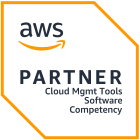
How Predictive Scaling transforms K8s from reactive to proactive
Precise resource allocation in Kubernetes (K8s) environments can be incredibly challenging. The dynamic and unpredictable nature of workloads and the technical difficulties in real-time scaling make it difficult to ensure resources are utilized efficiently without over-provisioning or underutilization.
This article explores Predictive Scaling, a cutting-edge technology utilized by Zesty’s Kubernetes optimization platform, Kompass. It ensures your infrastructure is always ready to scale precisely when needed, without overprovisioning or underutilization, ultimately driving both cost savings and enhanced performance.
What is Predictive Scaling?
Predictive Scaling dynamically predicts K8s compute and storage resource allocation based on historical data, usage patterns and metadata. Predictive Scaling enables dynamic and intelligent resource allocation, ensuring your infrastructure scales proactively and efficiently, to meet demand precisely.
How it Works
Predictive Scaling analyzes historical usage metrics, workload metadata, and real-time fluctuations to forecast future resource needs. By continuously processing these inputs, the system predicts both short-term spikes and long-term trends, ensuring your resources are always aligned with the workload requirements, improving both the stability and cost-efficiency of your system.
Compute Optimization:
For compute resources, Headroom Reduction uses Predictive Scaling to optimize CPU utilization. Historical usage metrics and workload metadata are processed by advanced algorithms, generating detailed workload profiles that include usage patterns, peak gradients, cold start times, and customer-specific parameters like SLAs and cost objectives. Workload profiling predicts the minimum scaling needed to achieve an optimal balance between performance and cost. It also forecasts peak usage demands over time, ensuring SLA compliance and maintaining application stability.
That way, Headroom Reduction allows users to keep a minimal, dynamic resource buffer that is continuously optimized, ensuring compute resources are used efficiently. Additionally, a pool of hibernated nodes is kept on standby, ready for instant reactivation during demand increases or traffic spikes, ensuring uninterrupted performance and maximum cost efficiency.
Storage Optimization (Storage Autoscaling):
For storage, Storage Autoscaling leverages Predictive Scaling to optimize Persistent Volumes. advanced algorithms continuously track metrics like capacity, IOPS, and read/write throughput, along with instance and disk metadata, to create a behavioral profile of the instance file system. This profile helps predict usage fluctuations and ensures optimal storage performance in varying scenarios.
Storage Autoscaling leverages Predictive scaling to dynamically adjust volumes, shrinking excess provisioned storage, and adding or extending volumes in real-time to meet current needs. This process ensures cost reduction without any disruption to running pods or risk of downtime.
The benefits of using Predictive Scaling
There are a number of key benefits to implementing Predictive Scaling, which allows for more efficient resource management, improved performance, and significant cost savings in their Kubernetes environments. Here’s how Predictive Scaling can transform your cloud infrastructure:
Higher savings by minimizing resource buffers:
Predictive Scaling ensures that only the necessary resources are allocated, minimizing excess buffer and reducing over-provisioning. This efficiency enables significant cost savings, ensuring you only pay for the resources you need and avoiding waste.
Precise Allocation and SLA Compliance During Peak Demand:
Predictive Scaling dynamically adjusts resources to ensure precise allocation during peak demand periods. By proactively scaling based on historical data and usage trends, it guarantees that your infrastructure meets performance requirements while maintaining SLA compliance, even during the most unpredictable traffic spikes.
Dynamic Prediction for Continuous Optimization:
Predictive Scaling continuously analyzes usage patterns and workload data to forecast future needs. This dynamic prediction process ensures your infrastructure is always aligned with demand, optimizing resources in real time to maintain cost-efficiency and performance without manual intervention.
Automation to Remove the Hassle of Complex Prediction Models:
With Predictive Scaling, the complexity of building and managing prediction models is automated. By using AI-driven allocation based on real-time data, the system eliminates the guesswork and reduces the operational burden, enabling your team to focus on higher-level tasks while ensuring seamless scaling.
A Smarter Approach to Resource Allocation
By enabling precise resource allocation, continuous real-time optimization, and automation, Zesty’s Predictive Scaling technology enhances the efficiency of both compute and storage optimization. This combination drives higher savings by minimizing resource buffers, ensuring precise allocation, and guaranteeing SLA compliance. It also ensures full readiness during peak demand and reduces potential mistakes through AI-driven allocation, eliminating the need for manual processes. The system is dynamic, continuously adapting to keep resources optimized, while automation removes the hassle of building complex prediction models.
Through this technology, Zesty Kompass saves time and eliminates guesswork, thus empowering businesses to operate more efficiently without the complexity of manual adjustments.
Take the next step in optimizing your Kubernetes environment—explore Zesty Kompass and see how Predictive Scaling can transform your cloud infrastructure management.







